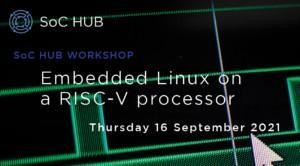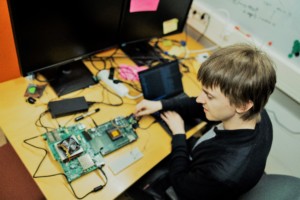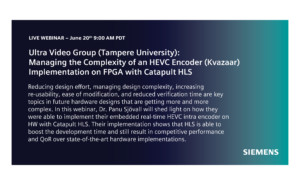
What is FPGA prototyping?
…be booted. The main difference between the FPGA prototype and the actual chip is the performance: if the clock speed of the chip would be 1 GHz then the FPGA… […]

…be booted. The main difference between the FPGA prototype and the actual chip is the performance: if the clock speed of the chip would be 1 GHz then the FPGA… […]

…The workshop begins with building Linux and an appropriate bootloader for a specific RISC-V chipset. The operating system build is then evaluated on an emulator, and same builds are also… […]

…the need to boost SoC development expertise in Finland and started making action plans with the project’s main partner, Nokia. Setting up the virtual organization for the project consortium started… […]

…hired researcher. The researcher will work in collaboration with SoC Hub, a strategic ecosystem created by Tampere University together with a consortium of local businesses to boost research and education… […]

…to the CPU boot. The major prerequisites for the project, such as the infrastructure and the agreements, were set up before the first tape-out and this enabled the development of… […]

…aims at creating open source HW and SW components as well as open-source tools to boost European competence on chip designs. The focus is on RISC-V based System-on-Chips (SoC) that… […]

…Catapult HLS. Their implementation shows that HLS is able to boost the development time and still result in competitive performance and QoR over state-of-the-art hardware implementations. What will you learn:… […]

…design educator in Finland. Tampere has a long history as a base for system-on-chip design in Finland. This expertise has been further boosted by the System-on-Chip Hub project, which was… […]

…author of the premier textbook for using HLS for design “The High-Level Synthesis (HLS) Blue Book”. Russell Klein HLS technologist for the Catapult HLS Platform at Siemens EDA (formally Mentor… […]
[…]